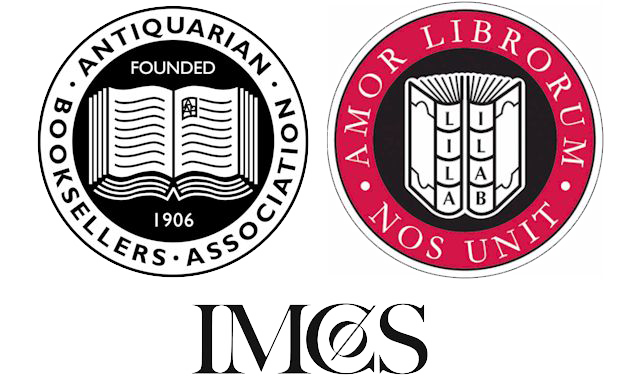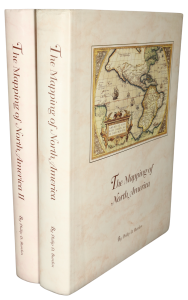Rare Maps and Prints
- World & Celestial
- North America
- West Indies, South & Central America
- British Isles
- British Isles
- English counties
- Large-scale
- Bedfordshire
- Berkshire
- Buckinghamshire
- Cambridgeshire
- Cheshire
- Cornwall
- Cumberland
- Derbyshire
- Devon
- Dorset
- Durham
- Essex
- Gloucestershire
- Hampshire
- Herefordshire
- Hertfordshire
- Huntingdonshire
- Islands
- Kent
- Lancashire
- Leicestershire
- Lincolnshire
- Middlesex
- Norfolk
- Northamptonshire
- Northumberland
- Nottinghamshire
- Oxfordshire
- Rutland
- Shropshire
- Somerset
- Staffordshire
- Suffolk
- Surrey
- Sussex
- Warwickshire
- Westmoreland
- Wiltshire
- Worcestershire
- Yorkshire
- Wales
- Scotland
- Ireland
- Western Europe
- Eastern Europe
- Middle East
- Africa
- Asia
- Australasia & Pacific
- Decorative Prints
- Title Pages
Mr. Philip D. Burden
P.O. Box 863,
Chalfont St. Giles, Bucks HP6 9HD,
UNITED KINGDOM
Tel: +44 (0) 1494 76 33 13
Email: enquiries@caburden.com
This is a superb example of the Covens & Mortier’s four-sheet edition of Henry Popple’s seminal map of North America. SIDE BOUND WITH NO CENTRE FOLDS, printed on thick paper with early outline colour. COMPLETE WITH ALL ACCOMPANYING PLATES.
This monumental map of North America is the first printed in a large scale and to name all the thirteen original colonies. Here it is found in the four-sheet reduction by Cornelius Mortier and Jean Covens. The partnership of Jean Covens and Corneille Mortier was founded in 1721 by the two brothers-in-law. It was built on the business of Corneille’s father Pierre Mortier who began in 1685. The firm through their descendants would survive until 1866.
Its author Henry Popple produced the map at the request of the Lord Commissioners of Trade and Plantations. The beginning of the seventeenth century saw an increase in claims by both the English and French to the interior of the continent. The French had their eye on the Ohio valley in particular. Early maps of the century by the likes of Guillaume De L’Isle for the French and Hermann Moll on behalf of the English produced maps to support their respective claims. Written lower right in the key sheet is the following:
‘Mr. Popple undertook this Map with ye Approbation of the Rt. Honourable the Lords Commissioners of Trade and Plantations; and great care has been taken by comparing all the Maps, Charts, and Observations that could be found, Especially the Authentick Records & Actual Surveys transmitted to their Lordships, by ye Governors of the British Plantations, and others, to correct ye many Errors committed in former Maps, and the Original Drawing of this having been shewn to ye Learned Dr. Edm. Halley Professor of Astronomy in ye University of Oxford, and F.R.S. he was pleased to give his Opinion of it in the Words following: I have seen the above mentioned Map, which as far as I am Judge, seems to have been laid down with great Accuracy, and to shew the Position of the different Provinces & Islands in that Part of the Globe more truly than any yet extant. Edm. Halley.’
Unfortunately, very little is known about Henry Popple beyond that fact that he was part of a family which served the Board of Trade and Plantations for three generations. This is his only known cartographic work. The map extends from the Grand Banks off Newfoundland to the west of Lake Superior, and from the Great Lakes to the north coast of South America. It drew upon not only British sources but the French mapping of Guillaume De L’Isle also. Some of the most significant contributions however were in the south east which incorporates the surveys of Colonel John Barnwell in the early 1720s. Construction began around 1727, a date which appears on the manuscript surviving today in the British Library.
The finished map was designed by Clement Lempriere (1683-1746) military engineer, draughtsman and engraver. The upper corners of the map include inset views of Mexico, Niagara Falls, Quebec and New York, here present printed individually on one sheet. The latter is derived from the large William Burgis view of c.1720. The right-hand side is illustrated with inset maps of Boston, Charles-Town, Providence, Bermuda, and several others. These are similarly provided for on a further separate plate.
For this map Covens and Mortier drew upon a later state of the Popple in which the new colony of Georgia is found. It was first published in 1741, but this third state issued according to Babinski in 1755 incorporates information relevant to the French and Indian War. This is found most notably with the introduction of Ft. du Quesne. One dated addition is that of Little Meadows 9 July 1755 in the north-west sheet which marks the spot of the Battle of the Wilderness. The Ohio River is redrawn, New Orleans is present. The map is often found with the key map, but rarely with the accompanying sheet of inset maps and the four engraved views.
The original map was thought of highly by George Washington, John Adams, Benjamin Franklin, and many others of the period. It was used in to resolve many territorial conflicts between the British and the French during the French & Indian War. As late as 1895 it was still being used in the boundary dispute between Britain and Venezuela over British Guyana. It is probably without question the most significant map of the eighteenth century of North America after the John Mitchell map of 1755.
Babinski (1998) ‘Henry Popple’s 1733 Map of the British Empire in North America; Brown, Lloyd Arnold (1959) ‘Early Maps of the Ohio Valley’ no. 14; Cumming & De Vorsey ‘The Southeast in Early Maps’ 231 & 249; De Vorsey, Louis (1986) ‘Maps in Colonial Promotion: James Edward Oglethorpe’s Use of Maps in ‘Selling’ the Georgia Scheme’, in Imago Mundi 38 pp. 39-45; Pritchard & Taliaferro (2002) ‘Degrees of Latitude’ pp. 134-41; Schwartz & Ehrenberg (1980) pp. 151-2.
This monumental map of North America is the first printed in a large scale and to name all the thirteen original colonies. Here it is found in the four-sheet reduction by Cornelius Mortier and Jean Covens. The partnership of Jean Covens and Corneille Mortier was founded in 1721 by the two brothers-in-law. It was built on the business of Corneille’s father Pierre Mortier who began in 1685. The firm through their descendants would survive until 1866.
Its author Henry Popple produced the map at the request of the Lord Commissioners of Trade and Plantations. The beginning of the seventeenth century saw an increase in claims by both the English and French to the interior of the continent. The French had their eye on the Ohio valley in particular. Early maps of the century by the likes of Guillaume De L’Isle for the French and Hermann Moll on behalf of the English produced maps to support their respective claims. Written lower right in the key sheet is the following:
‘Mr. Popple undertook this Map with ye Approbation of the Rt. Honourable the Lords Commissioners of Trade and Plantations; and great care has been taken by comparing all the Maps, Charts, and Observations that could be found, Especially the Authentick Records & Actual Surveys transmitted to their Lordships, by ye Governors of the British Plantations, and others, to correct ye many Errors committed in former Maps, and the Original Drawing of this having been shewn to ye Learned Dr. Edm. Halley Professor of Astronomy in ye University of Oxford, and F.R.S. he was pleased to give his Opinion of it in the Words following: I have seen the above mentioned Map, which as far as I am Judge, seems to have been laid down with great Accuracy, and to shew the Position of the different Provinces & Islands in that Part of the Globe more truly than any yet extant. Edm. Halley.’
Unfortunately, very little is known about Henry Popple beyond that fact that he was part of a family which served the Board of Trade and Plantations for three generations. This is his only known cartographic work. The map extends from the Grand Banks off Newfoundland to the west of Lake Superior, and from the Great Lakes to the north coast of South America. It drew upon not only British sources but the French mapping of Guillaume De L’Isle also. Some of the most significant contributions however were in the south east which incorporates the surveys of Colonel John Barnwell in the early 1720s. Construction began around 1727, a date which appears on the manuscript surviving today in the British Library.
The finished map was designed by Clement Lempriere (1683-1746) military engineer, draughtsman and engraver. The upper corners of the map include inset views of Mexico, Niagara Falls, Quebec and New York, here present printed individually on one sheet. The latter is derived from the large William Burgis view of c.1720. The right-hand side is illustrated with inset maps of Boston, Charles-Town, Providence, Bermuda, and several others. These are similarly provided for on a further separate plate.
For this map Covens and Mortier drew upon a later state of the Popple in which the new colony of Georgia is found. It was first published in 1741, but this third state issued according to Babinski in 1755 incorporates information relevant to the French and Indian War. This is found most notably with the introduction of Ft. du Quesne. One dated addition is that of Little Meadows 9 July 1755 in the north-west sheet which marks the spot of the Battle of the Wilderness. The Ohio River is redrawn, New Orleans is present. The map is often found with the key map, but rarely with the accompanying sheet of inset maps and the four engraved views.
The original map was thought of highly by George Washington, John Adams, Benjamin Franklin, and many others of the period. It was used in to resolve many territorial conflicts between the British and the French during the French & Indian War. As late as 1895 it was still being used in the boundary dispute between Britain and Venezuela over British Guyana. It is probably without question the most significant map of the eighteenth century of North America after the John Mitchell map of 1755.
Babinski (1998) ‘Henry Popple’s 1733 Map of the British Empire in North America; Brown, Lloyd Arnold (1959) ‘Early Maps of the Ohio Valley’ no. 14; Cumming & De Vorsey ‘The Southeast in Early Maps’ 231 & 249; De Vorsey, Louis (1986) ‘Maps in Colonial Promotion: James Edward Oglethorpe’s Use of Maps in ‘Selling’ the Georgia Scheme’, in Imago Mundi 38 pp. 39-45; Pritchard & Taliaferro (2002) ‘Degrees of Latitude’ pp. 134-41; Schwartz & Ehrenberg (1980) pp. 151-2.
POPPLE, Henry – COVENS, Jean & MORTIER, Pierre
A Map of the British Empire in America with the French Spanish and Dutch Possessions adjacent thereto by Henry Popple./ Carte Particuliere de l'Amerique Septentrionale/ Les Principales Forteresses Ports &c. De L'Amerique Septentrionale
Amsterdam, 1740c
1180 x 1040 mm. wall map, seven folio sheets, the four sheets together (595 x 525 mm. ea.), plus a general key map (510 x 485 mm. ea.), accompanying sheet of plans and plate of four views (300 x 575 mm. ea.)all in superb early outline colour, in excellent condition.
Stock number: 9607
SOLD








